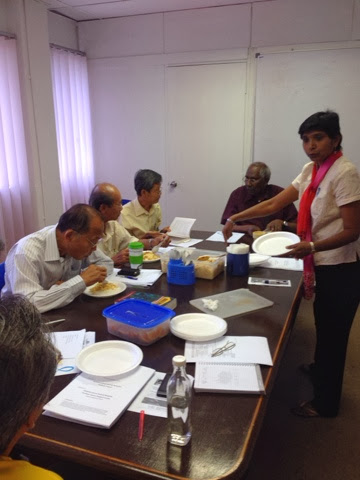Lets talk metabolism. Lets start by reading 365 ways to boost your metabolism by Rachel Laferrirere MS,RD. This is the most practical and easy to read health book. You can jumpstart your metabolism straight away.
Metabolism is the chemical
reactions in your body that converts foods into energy to sustain life. The
three major factors that make up metabolism are basal metabolic rate (BMR),
physical activity level (PAL) and thermic effect of food (TEF).
Basal metabolic rate measures the calories burned when our
body is at rest. This represent 60 -70 % of your total energy expenditure. 25 %
of your metabolic rate supports your physical activities and 10% of your
metabolic rate is expended during ingestion, digestion, absorption and
transportation of your calorie intake. Stress reduces the metabolic rate and
contributes to storing extra fat. Sleep and rest repairs muscles and rejuvenate
the body.
Your physical activities will burn the amount of calories
depending on the activity’s intensity and duration. And the thermic effect of
food measures the increase in the metabolic rate caused by digestion and
absorption of nutrients following a meal. The amount of calories burnt will
depend on the size of the meal, the ratio of carbohydrates to proteins to fats,
the fiber content, caffeine content and also spiciness.
The harder your body has to work to digest the foods that
you ate, the higher your metabolic rate.
Men burns mores calories than women. The more muscle you
have the higher the metabolic rate. The more you exercise the higher your
metabolic rate. Metabolic rates are also determined in your genes and thyroid
functions.
Metabolism slows down about 5% per decade with age, after
the age of 30 years old.
Metabolism comprise two simultaneous processes. They are complementary
and opposing actions. Catabolism
which breaks down the foods and Anabolism
that builds up the cells, move muscles and carries out other vital
functions.
Calories provide energy for your body, but your metabolism
decides how it is going to use the calories you ate. If you ate more than your
body’s needs, metabolism turns the excess to fat. And if you ate less than your
body’s requirements, metabolism will take the energy from your stored fats.
Meditation increases energy levels and stimulate metabolism. Vitamin D is known
to boost metabolism. Cortisol hormones affects metabolism negatively. Deep
breathing keeps the oxygen and blood moving throughout the body; enabling
effective metabolism.
Now that you know. Metabolism is more than just plain
digestion. It is a matter of life and death.
You can boost your metabolism by:
a. Knowing your body.
b. Exercising and moving your body.
c. Do strength training.
d. Spicing up your food intake.
e. Practice interval training.
f. Taking adequate nutrition and supplements.
g. Adopting healthy eating habits.
h. Avoid dehydration.
j. Maintaining your correct weight.
k. Having an active lifestyle.
l. Control and reducing fat intake.
m. Reducing stress.
a. Knowing your body.
b. Exercising and moving your body.
c. Do strength training.
d. Spicing up your food intake.
e. Practice interval training.
f. Taking adequate nutrition and supplements.
g. Adopting healthy eating habits.
h. Avoid dehydration.
j. Maintaining your correct weight.
k. Having an active lifestyle.
l. Control and reducing fat intake.
m. Reducing stress.
Allen Lai













